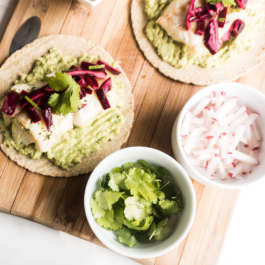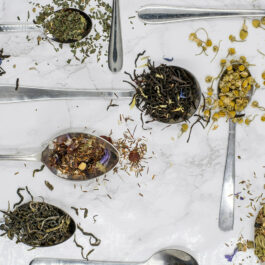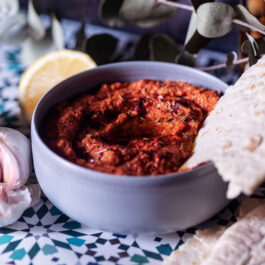Food
Love Me Tender: The Appeal Of Baby Vegetables
Slide Nr 1Regardless of your dietary preferences, cooking with vegetables isn’t always easy, and the results can often be rather lacklustre. If you’re looking to give your greens a lift, why not experiment with the sweeter, milder and markedly more tender taste of delicious baby vegetables? Even better, grow your own – these little legumes are perfect if you have limited time and space – then cook immediately after picking.
0/12
Food
Love Me Tender: The Appeal Of Baby Vegetables.
Slide Nr 2Baby Artichokes – No longer the overlooked or misunderstood vegetable variety that home cooks were never quite sure what to do with, artichokes are today available in most supermarkets and recognised for their innate deliciousness. Baby artichokes are easy to prepare, and can even be cooked and eaten whole. How to serve: It’s hard to go wrong, whether roasting or braising these little gems, but we suggest sautéeing with lemon and garlic for a tempting side dish.
1/12
Food
Love Me Tender: The Appeal Of Baby Vegetables.
Slide Nr 3Baby Aubergine – You could seek out a specific dwarf variety of aubergine (call it ‘eggplant’ if you prefer), but you can just as easily grow a standard variety and harvest early, as soon as it attains its familiar rich natural colour. Known popularly as ‘baby brinjal’ in India, prepare when fresh and appreciate their intense and less bitter flavour. How to serve: You can cook them as you would any aubergine, but our tip is a tempting baby aubergine and chickpea curry.
2/12
Food
Love Me Tender: The Appeal Of Baby Vegetables.
Slide Nr 4Baby Bok Choy – Again, there are bonsai varieties that you could try to grow, but you can also plant a standard variety and pick when they are still a small size. Rather than separating out the leaves, we like to cook them whole. How to serve: Blanch or steam and add to a tasty Asian soup, or quickly fry in vegetable oil with garlic and ginger, then cover with soy sauce and a dash of sesame oil to serve.
3/12
Food
Love Me Tender: The Appeal Of Baby Vegetables.
Slide Nr 5Baby Broccoli vs Broccolini – Despite inconsistent labelling in supermarkets and at food stalls, baby broccoli and broccolini (picture above) are actually distinct vegetables. Baby broccoli, as you might expect, is simply broccoli picked young, while broccolini is a hybrid of standard broccoli and Chinese broccoli. The good news is that they’re both delicious. How to serve: We love the narrower, sweeter stalks of broccolini and suggest cooking quickly to bring out their natural flavour. Simply toss in to a stir fry or throw fresh onto the barbecue, and season to serve.
4/12
Food
Love Me Tender: The Appeal Of Baby Vegetables.
Slide Nr 6Baby Carrots – Few things are sweeter or more delicious than a baby carrot harvested when the root is no longer than your little finger. The taste will be infinitely superior to the processed ‘baby cut’ carrots that are simply larger carrots trimmed to a smaller size and standardised shape. You could grow them in a window box or, if grown outdoors, thin out your crop with an early baby carrot harvest, and let the rest grow to full size later in the season. How to serve: Cook as lightly and simply as possible to draw out their natural flavours.
5/12
Food
Love Me Tender: The Appeal Of Baby Vegetables.
Slide Nr 7Baby Corn – Sometimes described as ‘cornlets’, baby corn offers all the taste and flavour of your favourite sweetcorn, but can be eaten whole – which is never possible with the mature crop. While you will find both raw and pickled baby corn in stores, if you’re growing at home, we suggest cooking the raw variety. How to serve: As with carrots, baby corn is best when cooked simply. You could throw it into a salad or, if you’re feeling more adventurous, fry a batch in a tasty beer batter and serve with your favourite dips – ideal as a party snack or for a movie night at home!
6/12
Food
Love Me Tender: The Appeal Of Baby Vegetables.
Slide Nr 8Baby Green Beans / Haricots Verts – While green beans may be sold in both small or larger forms, we recommend the baby form similar to the French ‘haricots verts’, which are usually only sold in that much skinnier form. Cut them open, and you will notice that the beans have barely formed; kids will appreciate the absence of that tough stringiness found in the mature crop. How to serve: Enjoy raw in a salad or lightly steam and toss with some butter, before serving with sea salt, pepper and a squeeze of lemon juice.
7/12
Food
Love Me Tender: The Appeal Of Baby Vegetables.
Slide Nr 9Leeks – Baby leeks aren’t always easy to find in stores, so why not grow your own? As mentioned before, your best bet is to plant generously and then harvest an early crop to thin out the remaining leeks, which you can leave to mature, ready for the ultimate Vichyssoise soup later in the season. How to serve: Braise, roast, steam, sautée… take your pick. The culinary possibilities really are almost endless with this most versatile of all baby vegetables.
8/12
Food
Love Me Tender: The Appeal Of Baby Vegetables.
Slide Nr 10Baby Peas / Petits Pois – Smaller, sweeter, softer, less starchy… what’s not to like about baby peas, or petits pois to use their French name? Share the news of these miraculous qualities with a vegetable-hating infant, and you may be surprised to discover that they are willing to eat their peas after all – just keep them small. How to serve: Delicious in salads, soups, quiches or more, our tip is to blanch your baby peas slightly and then mix with ricotta and pecorino cheeses, before stuffing into conchiglioni pasta shells.
9/12
Food
Love Me Tender: The Appeal Of Baby Vegetables.
Slide Nr 11Baby Potatoes / New Potatoes / Fingerlings – Baby or new potatoes are simply potatoes harvested when still quite small – typically no more than one or two inches in diameter. Fingerlings, however, are smaller (often heirloom) varieties that are a longer shape, but also harvested when still a smaller diameter. How to serve: Potatoes are, arguably, the most versatile of all vegetables, and these smaller variants are no exception. Cook them as you enjoy them most, but pause to truly savour their sweeter taste and distinct texture.
10/12
Food
Love Me Tender: The Appeal Of Baby Vegetables.
Slide Nr 12Spinach – Let’s be honest, there are plenty of people who avoid spinach due to its slightly bitter taste. If you’re a signed-up member of that particular club, then say hello to the world of baby spinach. Just imagine, all the nutritious goodness of spinach, but with a milder, sweeter flavour. These qualities make it a favourite for salads, wraps and whatever else you can think of. How to serve: Once again, we suggest keeping things simple, but if you want to try something more advanced, there are few things more tempting than wilted baby spinach with chopped garlic, olive oil and a fine grind of nutmeg. Quick, simple and delicious!
11/12
Food
Love Me Tender: The Appeal Of Baby Vegetables.
Slide Nr 13Cocktail Tomatoes & Co. – When it comes to ‘going tiny’, at least in vegetable terms, people have the least scepticism when it comes to tomatoes. We are all familiar with seeing cherry, cocktail and grape tomatoes in stores, and everyone recognises their intense flavours. However, there are differences worth knowing. While both cherry and cocktail tomatoes are spherical, cocktail tomatoes are slightly larger than cherry ones. Grape tomatoes, meanwhile, resemble miniature plum tomatoes and are typically fleshier and less watery than their cocktail and cherry cousins. How to serve: Throw into salads, roast or follow our tip and use them to top miniature quiches for picnics.
12/12















Sorry, the comment form is closed at this time.